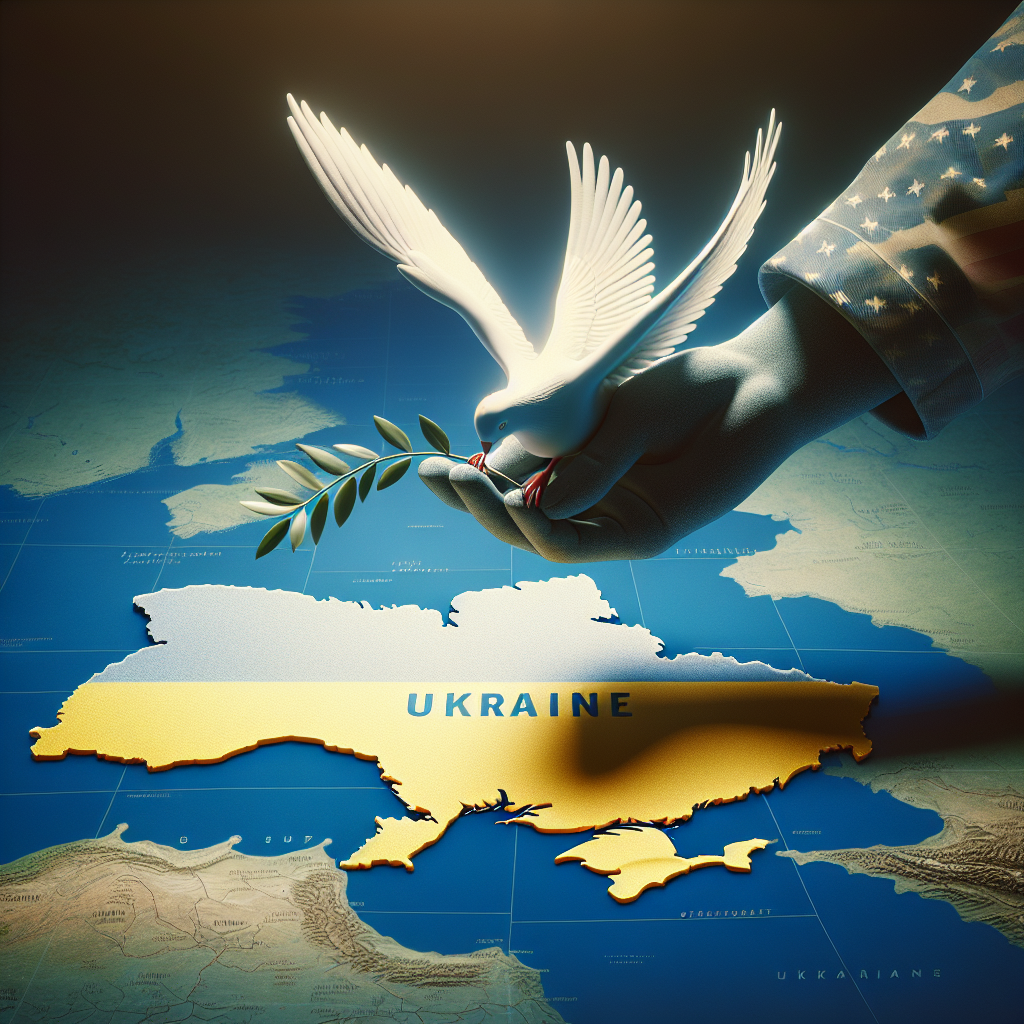Title: "Ukraine-Russia Ceasefire: A Step Toward Peace or Temporary Halt?"
Introduction
The prolonged conflict between Ukraine and Russia has captured global attention, impacting not only the lives of millions but also the stability of international relations. On March 13, 2025, the world was presented with a glimmer of hope: Ukraine agreed to a United States-proposed, one-month ceasefire in its ongoing conflict with Russia. This diplomatic attempt, facilitated by strategic talks in Saudi Arabia, aims to ease tensions and possibly pave the way for further negotiations. But is this development a genuine stride toward peace, or merely a temporary pause in a deeply entrenched war?
In this blog, we'll dive into the key aspects of this ceasefire proposal, analyzing its implications for Ukraine, Russia, and the broader international community. We'll also explore the historical context, the role of the United States in mediating the process, and the potential challenges ahead.
The Context: How We Got Here
The Ukraine-Russia conflict, born out of Russia’s annexation of Crimea in 2014 and escalated through a full-scale invasion in 2022, has been marked by devastating loss and geopolitical upheaval. Over the years, various ceasefire agreements have come and gone, offering fleeting moments of respite. However, the conflict persists—accentuated by Russia’s territorial demands and Ukraine’s resolute defense of its sovereignty.
The latest US-proposed initiative comes amidst a backdrop of mounting global fatigue over this prolonged confrontation. High-level talks in Saudi Arabia, with the US acting as a mediator, underscored the international community's willingness to press for a peaceful resolution—but with careful orchestration and guarded optimism. The effectiveness of this one-month ceasefire will largely depend on how Russia receives the proposal and whether both sides honor the terms.
Analyzing the US Role: Peacekeeper or Strategist?
The United States has consistently played a central role in supporting Ukraine, from providing military aid to rallying international sanctions against Russia. This latest ceasefire initiative marks a shift in Washington’s approach, signaling a stronger focus on diplomacy. But make no mistake: this is as much about geopolitical strategy as it is about fostering peace.
By proposing the ceasefire, the US seeks to achieve several objectives:
- Humanitarian Relief: The one-month pause would allow for the delivery of much-needed aid to affected regions, easing the suffering of civilians.
- Political Leverage: Acting as a mediator positions the US as a global peacekeeper while maintaining its staunch support for Ukraine.
- Pressure on Russia: Whether or not Russia accepts the ceasefire terms, Washington hopes to expose Moscow’s unwillingness for peaceful resolution, further isolating it politically.
This calculated move reflects how high-stakes diplomacy often intertwines with geopolitical interests, making the implementation of the ceasefire a delicate task.
Possible Outcomes: Short-Term Pause or Path to Resolution?
While the initiative is being hailed by some as a crucial turning point, many challenges cast doubt on its long-term success. A few possible scenarios include:
-
Acceptance and Compliance: If Russia agrees to the terms, the ceasefire could create a framework for continued negotiations, potentially leading to a lasting peace agreement. However, this would require mutual compromises, which have proven elusive thus far.
-
Acceptance and Violation: Even if both sides accept the terms, history has shown that ceasefires in this region are often marred by breaches. Skirmishes along the frontlines or covert operations could nullify the agreement.
-
Rejection by Russia: Moscow’s outright rejection of the proposal would exacerbate the situation, likely escalating military operations and deepening the crisis.
It’s worth noting that trust between the two nations is practically non-existent, posing a substantial hurdle for any ceasefire to hold.
Global Implications of a Ceasefire in Ukraine
The outcome of this one-month ceasefire extends far beyond the borders of Ukraine and Russia. It carries significant weight for international relations, the global economy, and humanitarian efforts:
- Energy Markets: A pause in hostilities could stabilize volatile energy markets, particularly in Europe, which relies heavily on Ukrainian and Russian energy routes.
- Military Alliances: The ceasefire offers NATO and allied nations a chance to recalibrate their strategies without immediate pressure from ongoing hostilities.
- Humanitarian Aid: Non-governmental organizations and aid agencies can use the pause to access war-torn areas, distributing lifesaving supplies and rebuilding infrastructure.
However, failure to honor the ceasefire could backfire spectacularly, deepening mistrust and alienating diplomatic allies further.
Conclusion
The US-proposed one-month ceasefire represents a rare yet fragile opportunity for de-escalation in the Ukraine-Russia conflict. While the initiative is a hopeful step, its success hinges on the willingness of all parties to act in good faith. For Ukraine, this is not just about halting violence but defending sovereignty and resilience. For Russia, it’s a test of whether its geopolitical ambitions outweigh potential global isolation.
As the international community awaits Russia’s response, one thing is clear: this ceasefire is not the end of the war, but it could be a pivotal milestone in a long journey toward peace. Only time will tell if this is a genuine breakthrough—or a fleeting pause in a tragedy that has already lasted far too long.
Q&A Section
Q1: Why is this ceasefire significant?
The one-month ceasefire could provide temporary humanitarian relief and open pathways for further negotiations, potentially setting a precedent for long-term peace efforts.
Q2: What are the risks of this ceasefire?
The primary risks include breaches of terms, mistrust between the parties, and geopolitical tensions that could derail progress.
Q3: How has the US influenced this proposal?
The US acted as a mediator during high-stakes talks in Saudi Arabia. Its proposal reflects strategic diplomacy aimed at fostering peace while pressuring Russia diplomatically.
Q4: Has a ceasefire worked before in this conflict?
Previous ceasefires between Ukraine and Russia have been short-lived, often violated by one or both sides, resulting in renewed hostilities.
Q5: What role can the international community play?
The international community must monitor the ceasefire, ensure accountability for any breaches, and provide support for humanitarian and rebuilding efforts.
Relevant Tags
#UkraineRussiaConflict #Ceasefire #USForeignPolicy #Geopolitics #InternationalRelations #UkraineCrisis #GlobalPeace
